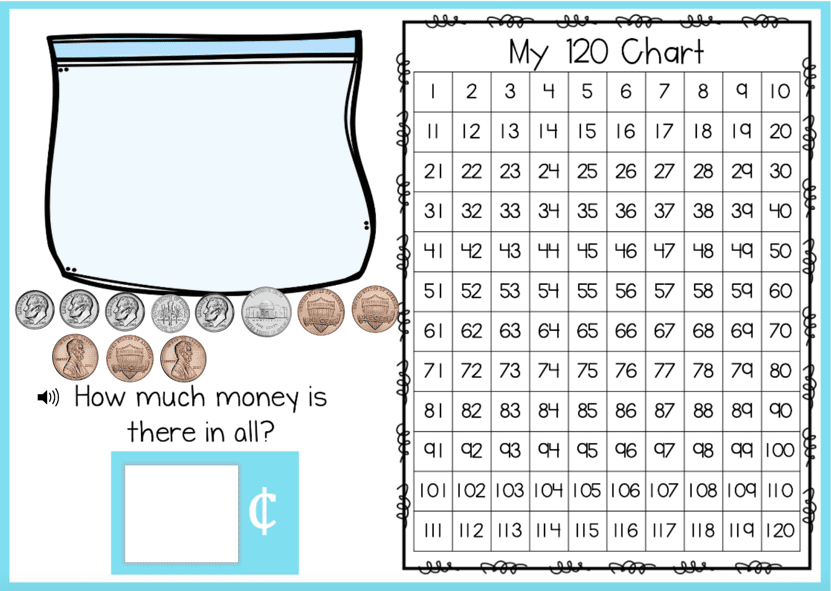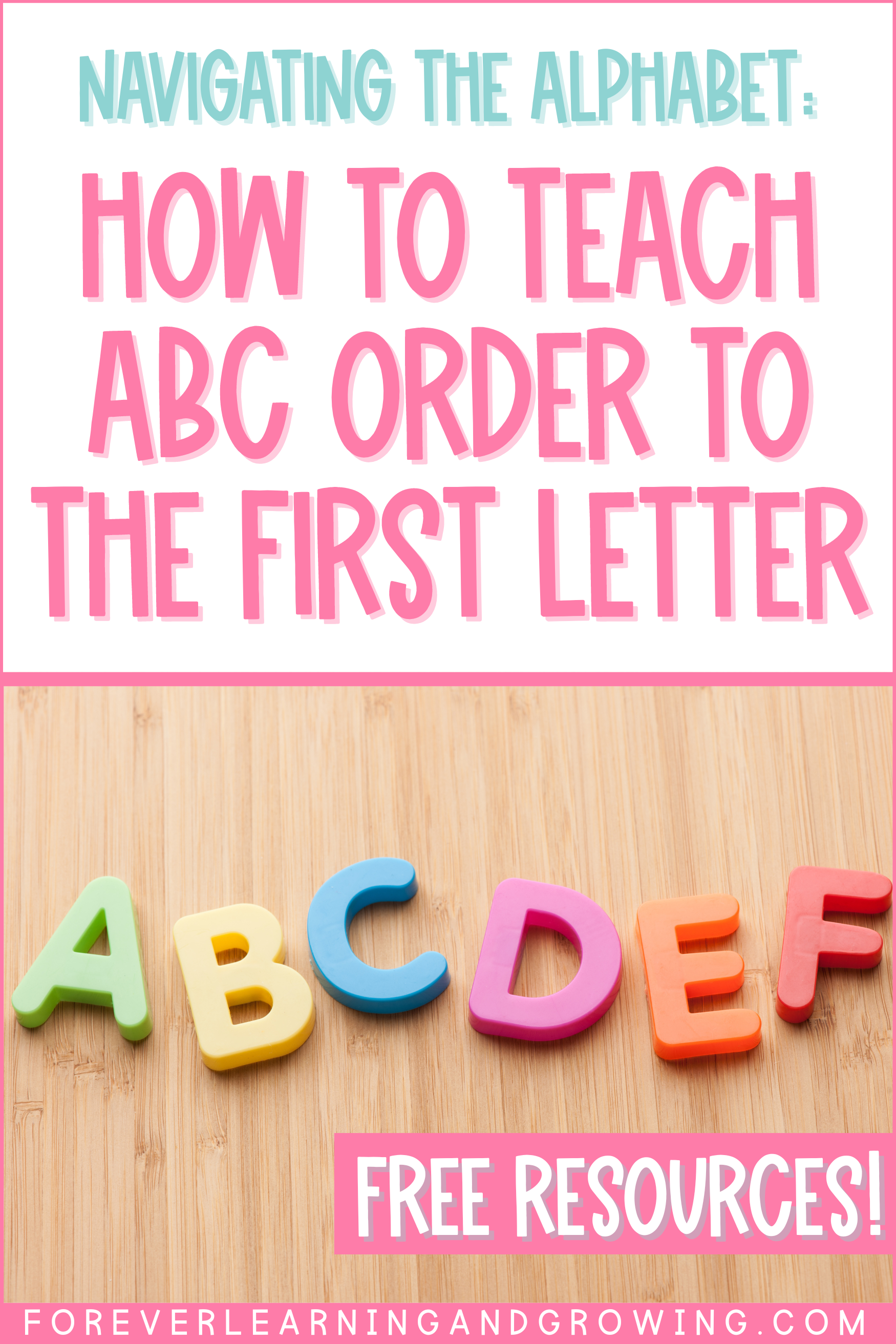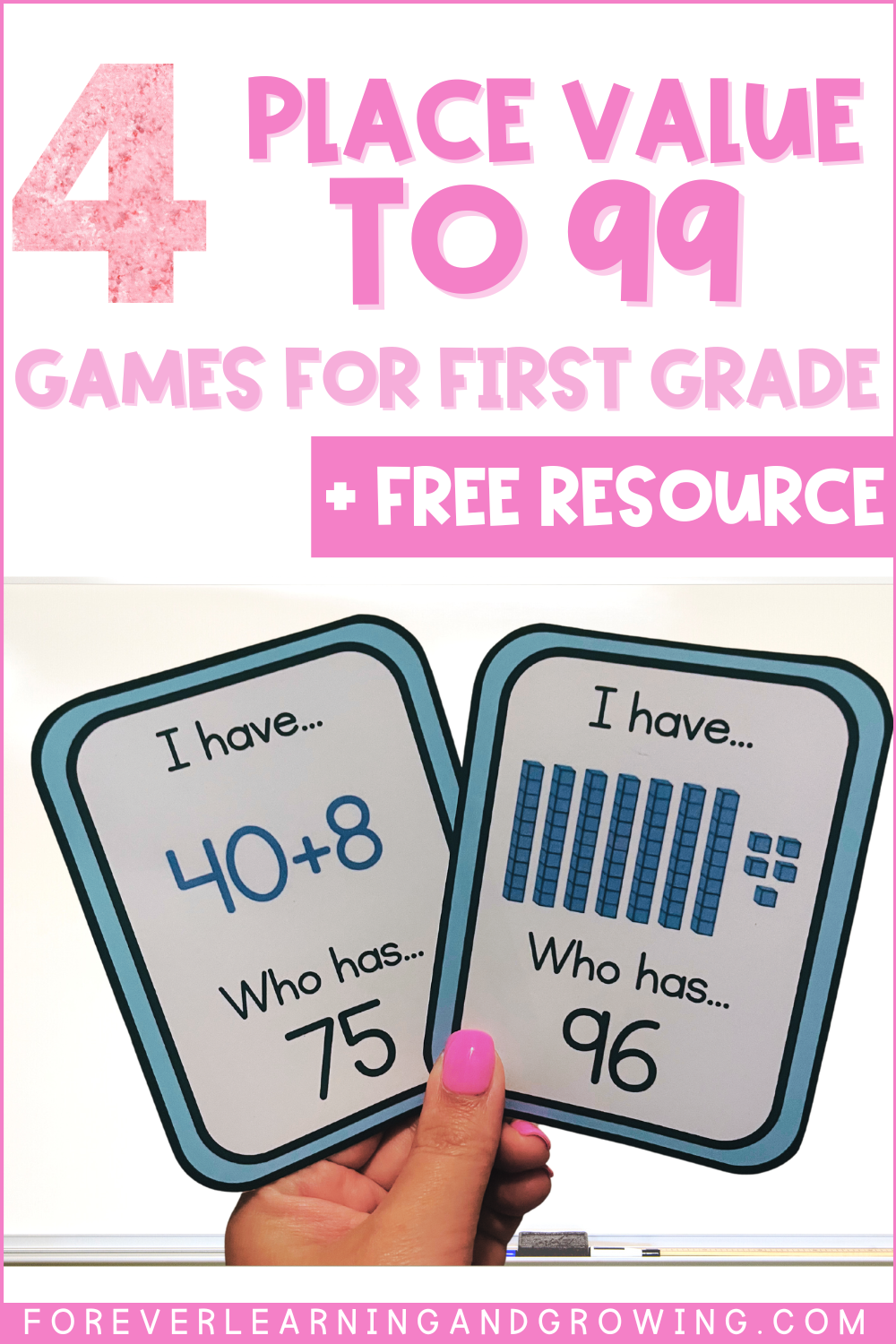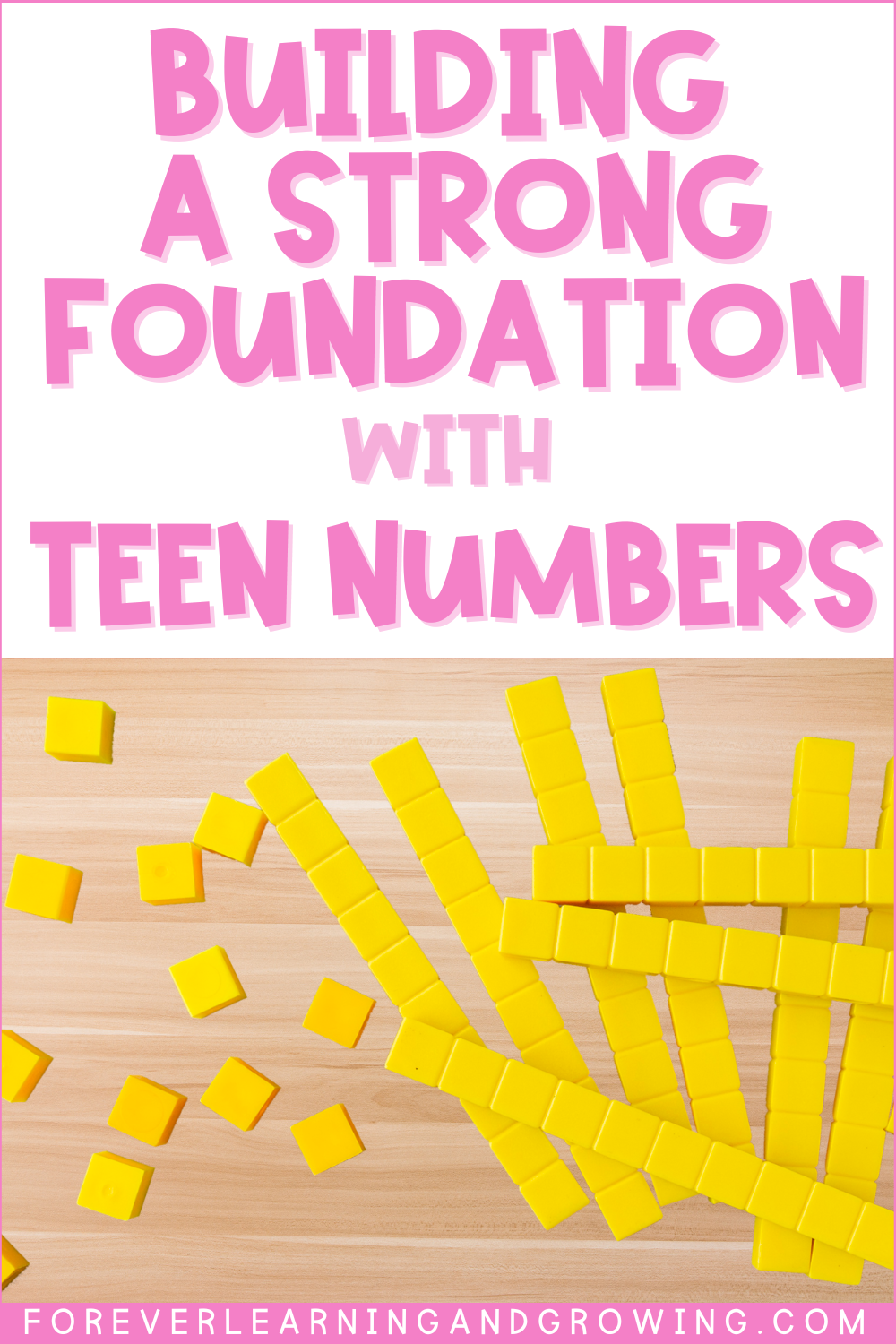2 Strategies I Love for Counting Coins
(This post contains affiliate links. If you click & purchase, I may receive a small commission at no extra cost to you. I only recommend products & services that I personally use or find value in.)

One thing is for sure… teaching students to count collections of coins is no easy undertaking! Today I’m sharing 2 strategies for counting coins that will hopefully help your kids on the way to mastery of this skill!
The Importance of Skip Counting
Before you even begin teaching students about coins you need to start with skip counting. This is something you don’t want to skip over! Skip counting is absolutely essential for counting coins and if students have a pretty good grasp ahead of your coin unit, it will make your life that much easier.
We spent a week before teaching coins skip counting by 1’s, 2’s, 5’s, and 10’s (obviously there is no coin worth 2 cents, but it’s still an important skill!) My students’ favorite way to start each math block during that week was to play “sparkle” with the focus of that day. So if we were skip counting by 5’s that day, we did skip counting by 5’s. Not sure how to play sparkle? I’ve got you covered!
How to Play Sparkle:
- Have students get in a circle up front. I had each student grab their hundreds chart (grab this as a freebie at the end of this post!) to use as a support, if needed.
- If today we were skip counting by 5’s, I would tell students for the first round we would start at 25 and skip count by 5’s until 55 (pick any start and ending number). On the board I would write 25 –> 55 just so students had a visual reminder as well.
- I would then pick a student to start and that student would say “25”. The next person in the circle would say “30” and so on until we get to 55. After someone says the ending number, in this case 55, the next person then says “sparkle” and the person after them sits down.
- Then you repeat a bunch of rounds until you’re left with one person standing.
Seems like that might take a while, right? Yes and no. There’s a few other rules I use in my classroom that tend to naturally speed up the game. These rules definitely help minimize talking & maximize the listening!
- If you say the wrong number, you sit down (so if the second person said 35 instead of 30, I’d signal for them to sit).
- If someone counts past the final number instead of saying “sparkle” they have to sit (it’s on the board and was said aloud, so students have to make sure they listen!)
- I do not repeat what the person before them said either if they weren’t listening– sometimes several students in a row might get out if none of them were paying attention.
Even if students get out early, they are still listening to their classmates skip counting which is beneficial as well! In saying that, I think of a kindergarten teacher at my school. Her class is at the bathroom in the hallway each day when we are walking to lunch. She leads her class in skip counting the first graders as we walk by– she started out counting one by one and then moved on to skip counting by 5’s and 10’s. Do all of her students know how to skip count? I’m willing to bet not. Are they internalizing what they hear and is she helping this skill to come easier to some of those friends in the future? Absolutely!
Now that we’ve talked about the importance of skip counting, let’s dive into 2 great strategies for counting coins.
Strategy #1: Line Coins Up in Value Order
The one thing I make sure my students always do before counting coins is line up their play coins in value order. In first grade, we technically only count collections of coins with dimes, nickels, and pennies, so students would line all the dimes up followed by the nickels and then pennies. This makes skip counting SO much easier! For example, if we are counting coins and the collection has 4 dimes, 3 nickels, and 3 pennies, it would be really hard to start with a 2 pennies (2 cents), then add in a nickel (7 cents), then a dime (17 cents), then another nickel (22 cents), and so on.
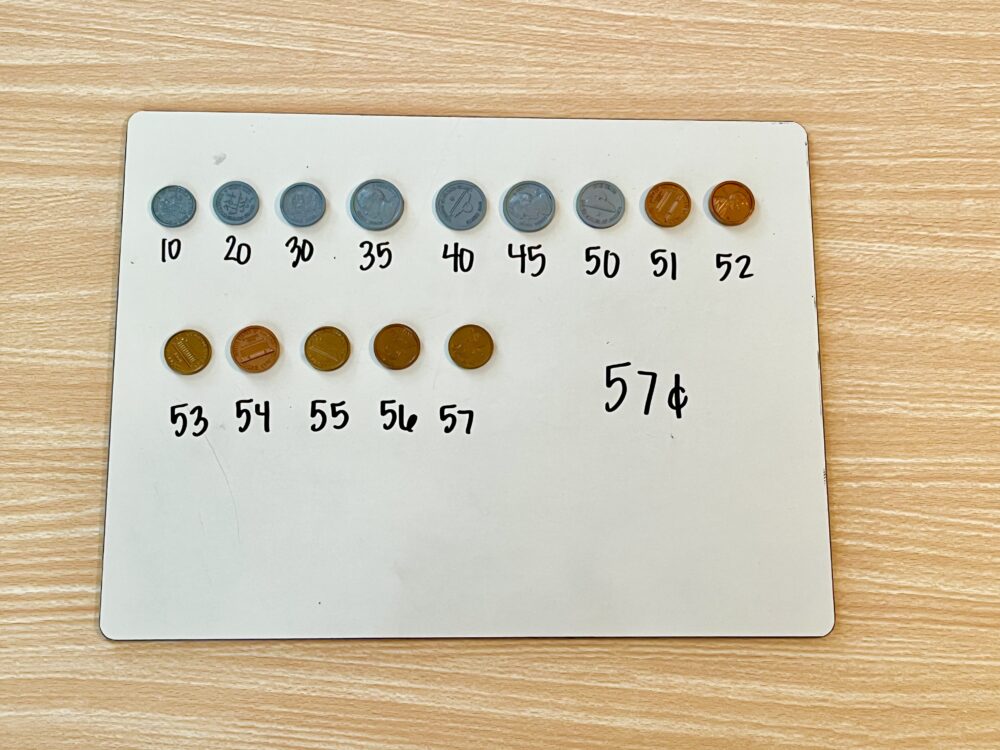
By putting the coins in order to start with, it makes skip counting so much easier. If students encounter a problem on a test or the iPad where the coins aren’t draggable but are mixed up, I teach students to re-draw the coins in value order by just drawing circles with the value inside it (ex. a dime would be drawn as a circle with a 10 inside it). As students re-draw the coins, they can cross out the ones they’ve drawn (if the question is on paper) until they draw all the coins. Then, it makes it much easier to skip count and students don’t accidentally skip counting a coin because they were all jumbled up.
Strategy #2: Use a Hundreds Chart for Counting Coins
I have found this strategy to work great for all students, but especially those who may need a little more help skip counting still. This strategy starts out very similar to the first one– line up all the coins in value order. Next, students place them on the hundreds chart as they skip count. For example, with 3 dimes, 4 nickels, and 7 pennies, students would place a dime on 10, a dime on 20, a dime on 30, a nickel on 35, and so on. Whatever number the last coin ends up on is the value of the coin collection.
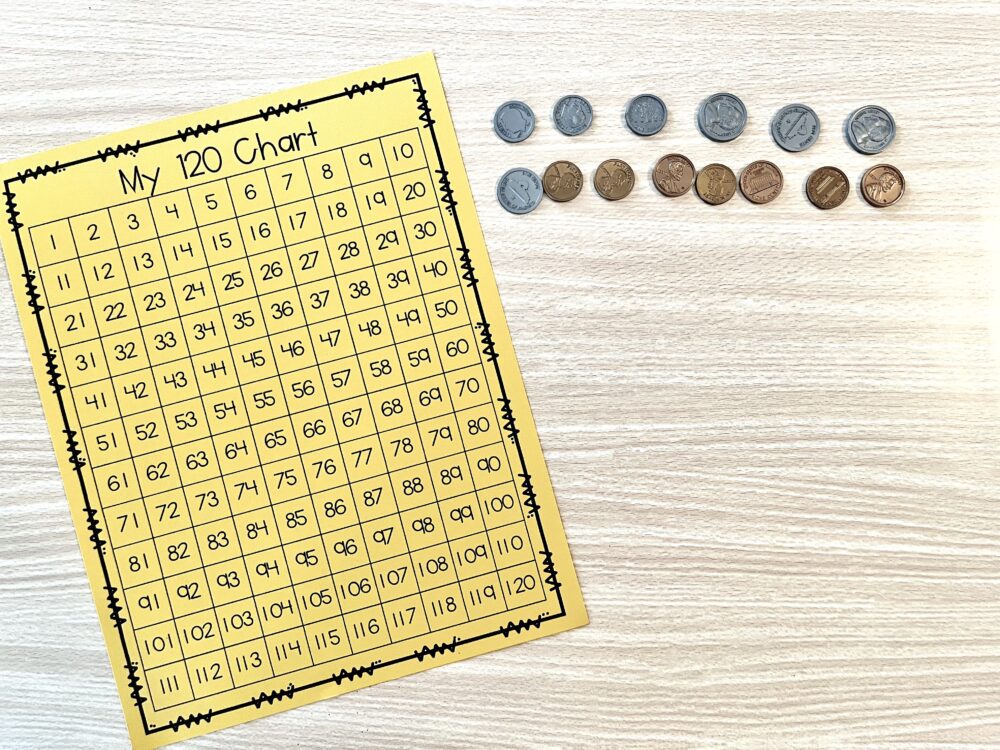
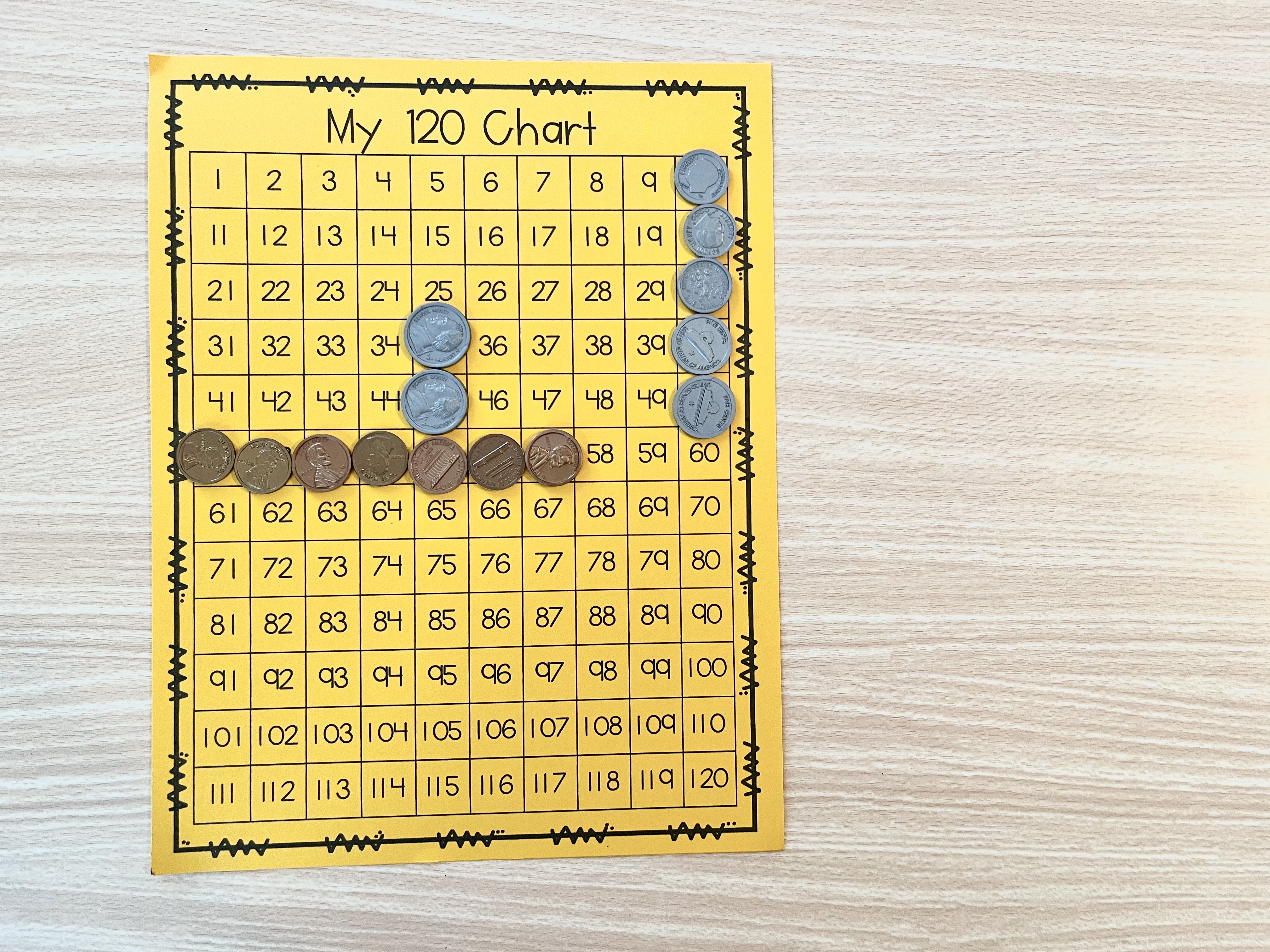
The reason this strategy can be more helpful for strategy is simple– it helps them count. Hopefully most your students understand (or can come to understand pretty quickly) that if they are on 45, they can go up/down a box to jump +10/-10. Using the chart allows them to easily skip count by 10’s. However, for those who don’t have that understanding yet, they could count box by box, one by one until they count 10 spots and then put the next coin down.
Really the biggest reason I use this strategy is for students who still need a little support with their hundreds chart and counting/skip counting. Those who still have to sometimes point & count by 1’s do better using a hundred chart. After a while, most students can graduate up to strategy #1 and not use the hundreds chart. Instead, they just redraw the coins & skip count from there.
The way to really help your students master counting coins is by getting lots of practice. I have 2 Boom Cards activities for counting coins that utilize the two strategies listed above: one for counting collections of like coins and another for counting collections of mixed coins (you can also grab these together in a bundle).
These digital resources come with a hundreds charts and draggable coins– so students can choose if they want to just arrange coins in value order in a blank area of the page and then skip count from there. Another option would be to drag the coins in value order onto the hundreds chart on the page. If you want to give your students lots of practice with counting coins, be sure to grab these resources!
Finally, be sure to check out this freebie for a 120 chart. I print these on cardstock & laminate so that they not only last but also because students mark up these charts with dry erase markers every week. Students use these pretty much every day in my class. One side has the 120 chart and the other side has spellings of numbers up to 100 (you can still spell 120 by finding 100 and finding 20). Grab your FREE 120 chart below to start using in your classroom!
I hope you have found this blog post of 2 strategies for counting coins helpful. If you have any questions, feel free to reach out!

Want to save this pin for later?


